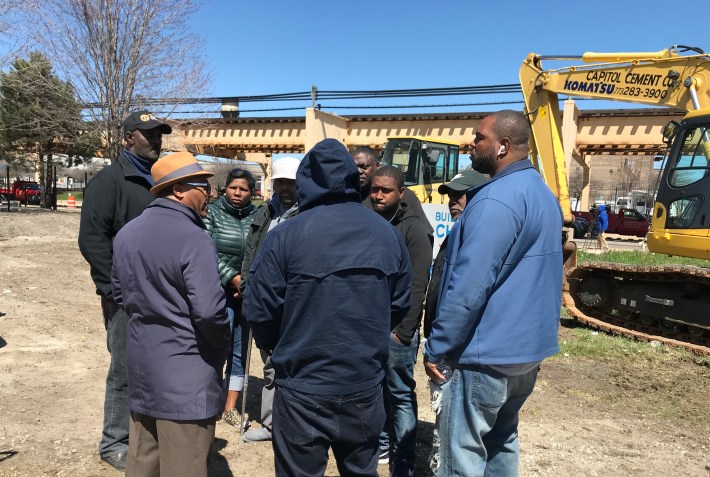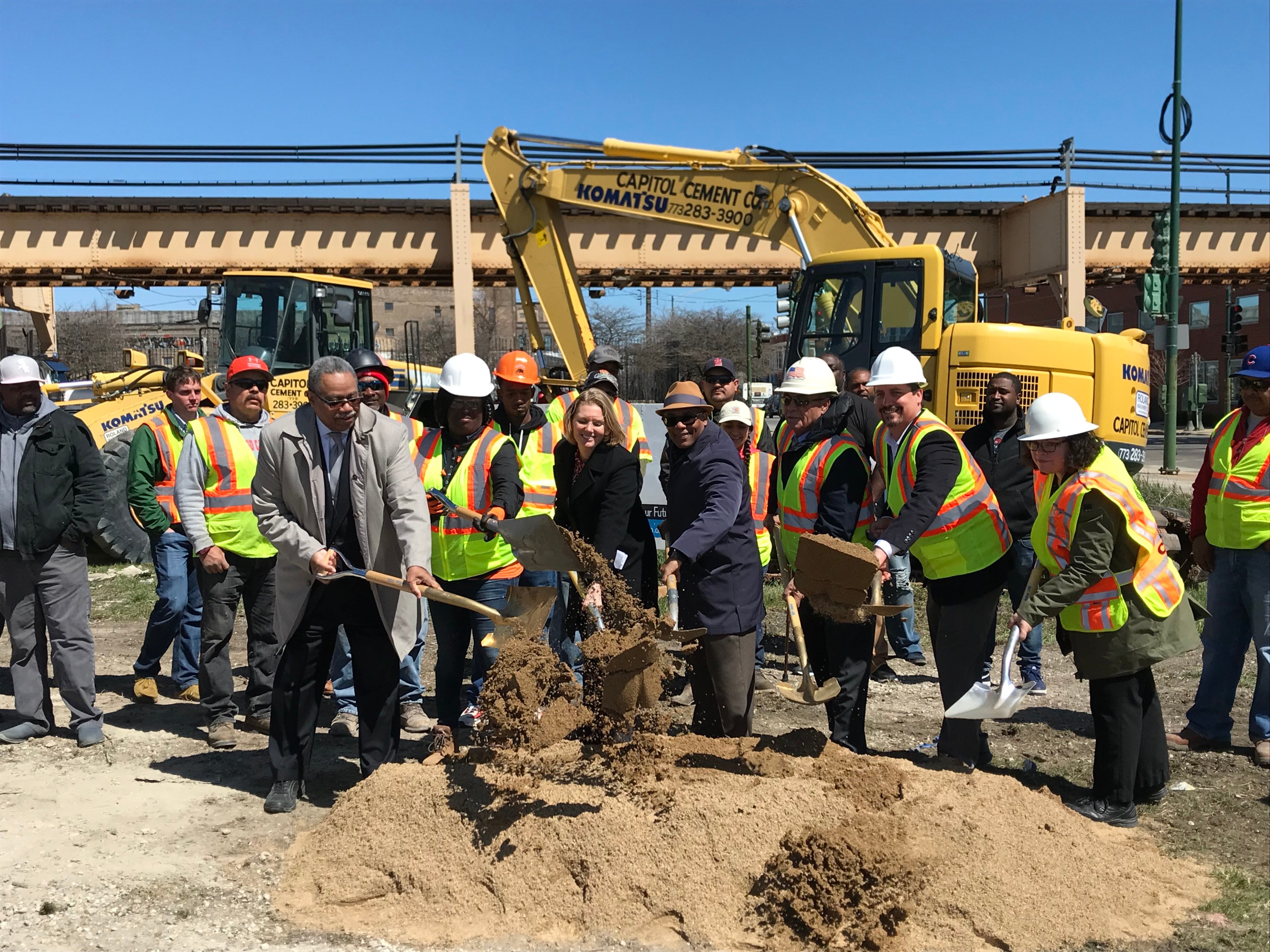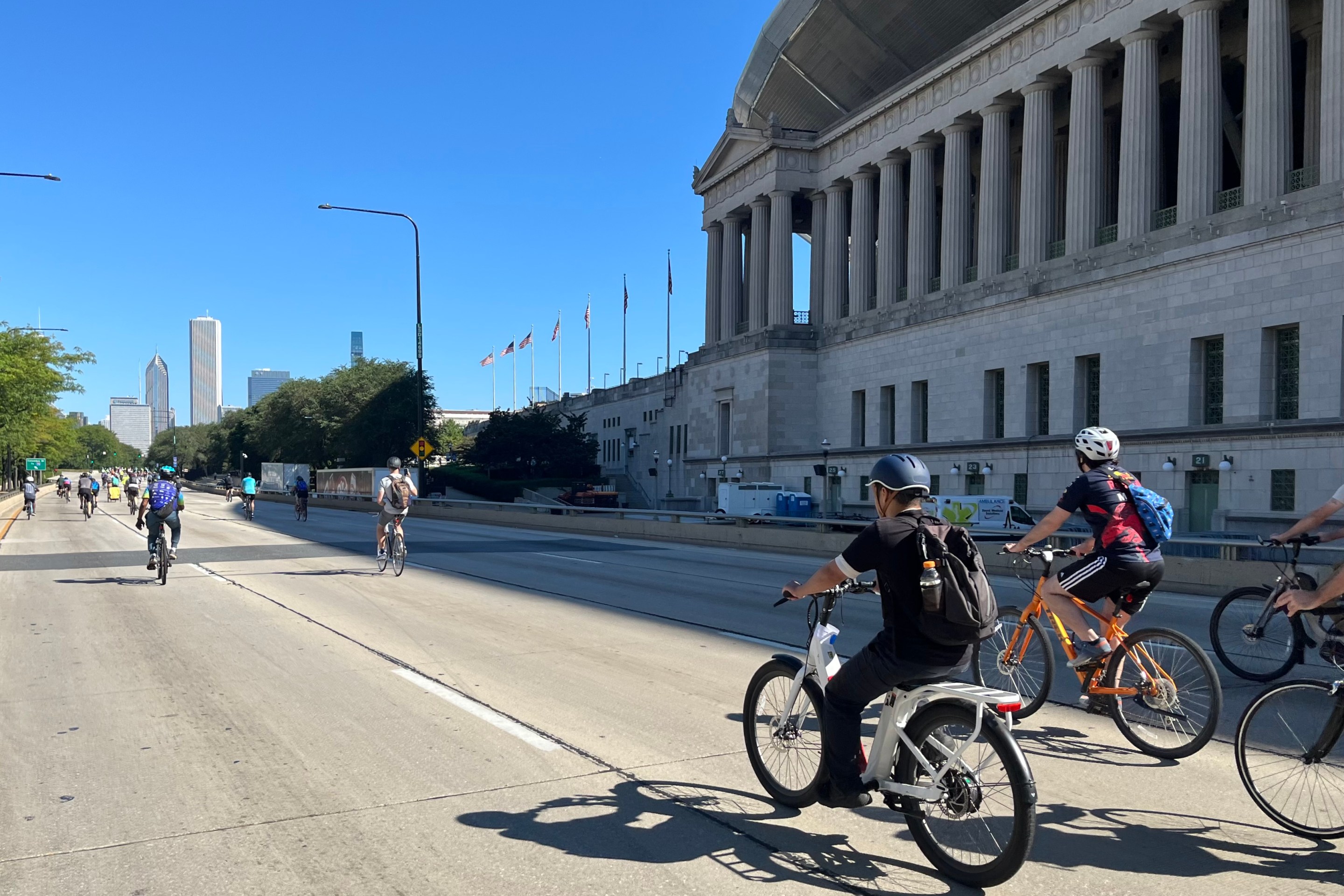For many years there have been conspicuous gaps in Green Line service on the Near West Side. In 2012 the city addressed the 1.3 mile space between the Clinton and Ashland & Lake stations by opening a new infill station at Morgan, which has helped spur development and commerce in the West Loop.
This morning city official heralded the next step in upgrading West Side ‘L’ service as they broke ground on a new $60 million Green Line stop at Lake Street and Damen Avenue, which will bridge the 1.5-mile distance between the Green Line’s Ashland and California stations. It will be the fourth new station opened in Chicago under the Rahm Emanuel administration, also including the Green Line’s Cermak-McCormick Place stop (2015) and the Loop’s Washington-Wabash station (2017).
“Today marks a milestone in the development of the Near West Side as we begin major improvements to Lake Street that will spur even greater economic activity and improve the quality of life for everyone who lives and works in the area,” Mayor Rahm Emanuel said in a statement. “With the support of [27th Ward] alderman Walter Burnett, we will close the transit gap and provide local residents and businesses in this fast-growing neighborhood a new station that will make the community stronger and more accessible for generations.”
In addition to building the station, the Chicago Department of Transportation will reconstruct a half-mile stretch of Lake from Ashland to Damen, a $12.9 million project. The total $72.9 million expenditure is funded by the Kinzie Indistria Corridor TIF plus state funding. The roadwork will improve access for trucks in the industrial corridor by increasing the vertical clearance under the tracks. It will also involve relocating support columns for the elevated tracks to make room for the new station. The Damen station is being designed by Perkins + Will, an architecture and design firm that has done the designs for transit facilities across the globe.
The area around the future station has recently seen a significant increase in residential and commercial development, which the improved transit access will surely accelerate. The stop will serve business along the industrial corridor and the CHA’s nearby Villages of Westhaven complex, and it will be a roughly seven-minute walk from the north entrance of the United Center. (The Pink Line also currently runs right by the stadium without stopping – if the city was to build an infill station at Madison and Paulina, it would be a mere four-minute walk from the north entrance.)
After the columns at Damen are relocated, work on the foundation is expected to start in late 2018, with work on the station house commencing in spring of 2019. The station is expected to open for business in 2020.
During the groundbreaking, CTA president Dorval Carter Jr. credited Burnett, whose ward also includes the Morgan stop, with having a “laser focus” on getting the Lake/Damen station funded and built. “This is a community that will benefit from this kind of investment, just as we’ve seen in other parts of the city,” Carter said. “If you look at Morgan, if you look at the Cermak Green Line [stop], there’s been an immediate return in terms of increased development, increased business, and increased opportunities for the people in the communities that they serve.”
Of course, as is often the case in Chicago, infrastructure investments can be a double-edged sword. While the Morgan stop in particular has helped fuel the current development boom in the West Loop, it has also contributed to an increase in housing costs in the neighborhood.
But Burnett told me the Lake/Damen station will have major benefits for his constituents and people who work in and travel to Near West Side, such as parishioners at several churches along Lake, students at Malcom X College, and patients heading appointments at the Illinois Medical District. “It may even encourage folks to start getting rid of the parking lots [in the area] and bring more residential and commercial commerce to the community."

After throwing the ceremonial shovels of dirt with the other ceremony participants, Burnett spoke for some time with a group of neighborhood residents who have gone through a mentoring and job-training program run by the Minority Business Alliance. They are now certified contractors hoping to find work with the Lake/Damen project, according to Jerry Lewis, owner of JLL Construction and a lifelong West Side resident who said he has coordinated with the alderman on the program. Lewis said the certification allows the trainees to be hired for union work that pays well. “[This way] the guys in the community who are working on specific projects are able to show representation that they legitimate contractors… without outside intervention coming in and saying what they do or do not do.”
The Lake Street project will include the following:
- Full reconstruction of a half-mile section of the existing street.
- Increasing the vertical clearance under the CTA elevated structure to better accommodate truck traffic that serves industry along the corridor.
- Relocation of four of the CTA elevated structure columns at the intersection of Damen and Lake to support the new transit station.
- Curb and gutter reconstruction to improve drainage.
- Replacement of drainage and utility structures.
- Replacement of all sidewalks and driveways.
- ADA curb ramp upgrades.
- Installation of 103 new “Twin Acorn” ornamental street lights.
- A total of 46 new trees in pits and parkways.
- Modernization of three signalized intersections at Damen, Wood and Paulina.






